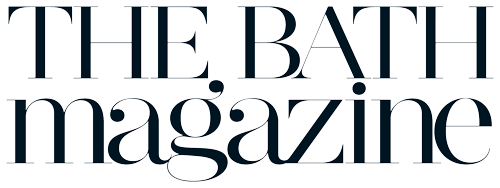The Holburne this month unveils its new Schroder Gallery – a £2-million space showcasing over 100 Renaissance treasures from the renowned Schroder Collection, including exquisite silver, bronzes, paintings and maiolica, many displayed together for the first time. Image: view of the new gallery featuring the Schwarzenberg Nef; Photography by Jo Hounsome
The Holburne’s new Schroder Gallery opens this month, a two-million-pound development displaying world-class Renaissance treasures from the Schroder family collection.
The space on the lower ground floor of the museum, designed by Eric Parry Associates with Real Studios, takes inspiration from the great treasury displays of the past. It will house one of the finest private collections of silverware in the country, as well as paintings, bronzes, maiolica and gems. This is the first time that the entire collection of Renaissance objects has been on show.

The display of over 100 pieces of silver in the Schroder Gallery includes some of the greatest masterpieces of the silversmith’s art, such as The Schwarzenberg Nef, a large silver ship; a rare Mechanical Celestial Globe (see opposite); and The Aldobrandini Tazza (from a set of 12 dishes seen as ‘one of the most spectacular groups of 16th-century silver’).
A major part of the collection includes bronze works, which enjoyed a revival in Renaissance Italy. An example from early 17th-century Florence depicts the abduction of Deianeira, wife of Hercules, by the centaur Nessus after Giambologna (1529-1608), the greatest Florentine sculptor of the time. Bronze was ideal for making objects that were both functional and decorative, such as an intricate writing box, bearing the coat of arms of Cardinal della Rovere, attributed to Severo de Ravenna, a well-regarded producer of bronze sculptures in early 16th-century Padua.
The collection also contains masterpieces of 16th-century Italian maiolica, a type of vibrantly coloured, glazed pottery. An Urbino deep circular cistern (1549) is highly decorative, painted in blue, green, yellow, orange, brown and purple. Examples of istoriato dishes, bearing mythical and allegorical themes, include The Mazo Dish painted with the the allegory of the civilising power of Eloquence. An Urbino istoriato circular dish depicts Leda and the Swan, recalling an episode from classical mythology, and possibly the Renaissance inclination to the erotic.

Important paintings from the first half of the 16th century are also hung in the Schroder Gallery, including works by artists such as Lucas Cranach the Elder and Hans Holbein the Elder, and notably Hans Burgkmaier’s important portrait of the great Augsburg banker Jakob Fugger and his wife Sybilla Artzt.
The works are a loan to the Holburne from the Estate of the late British banker Bruno Schroder, by his daughter Leonie and her family. The loan adds an array of world-class works of art to the collection of one of the most respected regional art museums in the country.
Director of the Holburne, Dr Chris Stephens, said: “The Holburne does not have a collection of Renaissance art, so this is an opportunity to open up a new side of the history of art for our visitors. The works in the Schroder Collection are of the highest quality so we can show the extraordinary skills of the craftsmen of the period. In the 15th and 16th centuries, there were not the same ides of hierarchy in the arts – silversmiths were as skilled and respected as painters, for example – and this allows us to show work covering silver, gems and jewels, paintings, sculpture and ceramics all together.

“Despite all being made in Europe, the objects reflect the powerful global forces already at play in the Renaissance period. Materials used and depicted in the paintings reflect the importance of the trade routes to eastern and southern Asia, Africa and the Americas, with much of the silver having been plundered from South America.”
The collection items are shown to reflect their associations. Chris explains, “The gallery is a concise space so that, even though the different materials are in separate sections they nonetheless all mingle together drawing out the inter-connectedness of the collection.”
Building work on the gallery began in summer 2024 under the direction of Eric Parry RA, the architect responsible for the Holburne’s renowned 2011 modern extension. The work involved converting archive and picture stores on the lower ground floor into a new gallery underneath the extension. As well as a new gallery space with full environmental controls, the redevelopment creates a more generous circulation space in the lower ground floor of the museum, with a new display area for additional works from the Holburne Collection.
The Museum is also opening a new gallery on the first floor. This brings back to public use a space designed as a gallery when the former Sydney Hotel was converted into the Holburne Museum in 1916. Located adjacent to the grand Ballroom overlooking Great Pulteney Street, the new first-floor gallery will house the Schroder family’s collection of 17th-century painting, mostly Netherlandish but including a major work by Claude Lorraine, the grandfather of the pastoral landscape. Shown on a rotating basis, the Schroder Collection of 17th-century paintings extends and enhances the Holburne’s own collection.
Standout works in the schroder collection
• The Baldewein Mechanical Celestial Globe – brass, silvered copper, iron and brass, Marburg, 1575. It combines a mechanism of extraordinary accuracy with a representation of the heavens.
• The Aldobrandini Tazza – showing Emperor Galba and scenes from his life, from the set of 12 so-called Aldobrandini tazze, ca. 1587–99, Flemish, probably Antwerp.
• The Mazo Dish , Venice and Urbino, 1549 – a major piece of 16th-century Italian maiolica, with an allegory depicting the civilising power of eloquence.
• The Schwarzenberg Nef, c. 1580 – silver, parcel-gilt and cold enamel. Marked Strasbourg, probably for Daniel Fladerer, Germany or Southern Netherlands. Nef refers to a ship-shaped object that symbolised high status; its role was to mark the place of the king or great lord at table.
• Nessus and Deianeira by Giambologna, court sculptor to the Medici Grand Dukes of Tuscany and the greatest sculptor of late 16th-century Florence. Early 17th century.
The Schroder Gallery opens on 10 September. holburne.org


